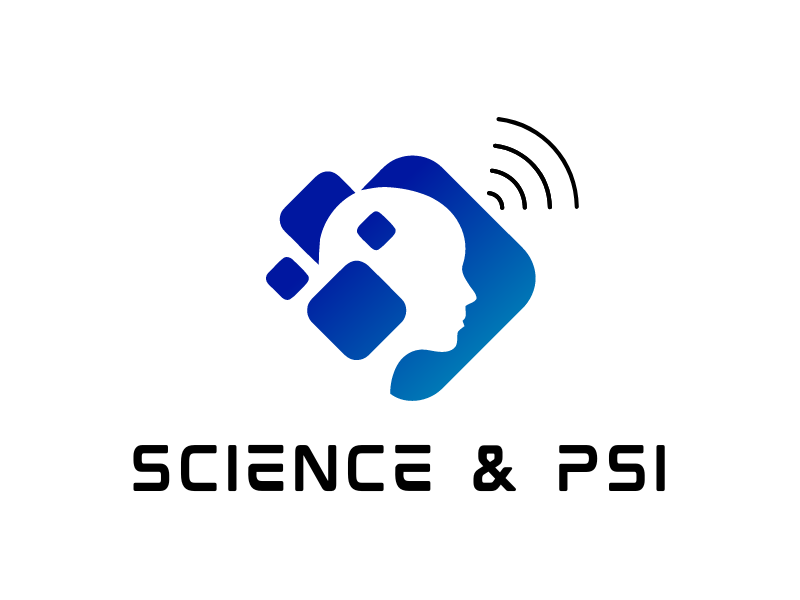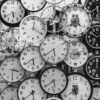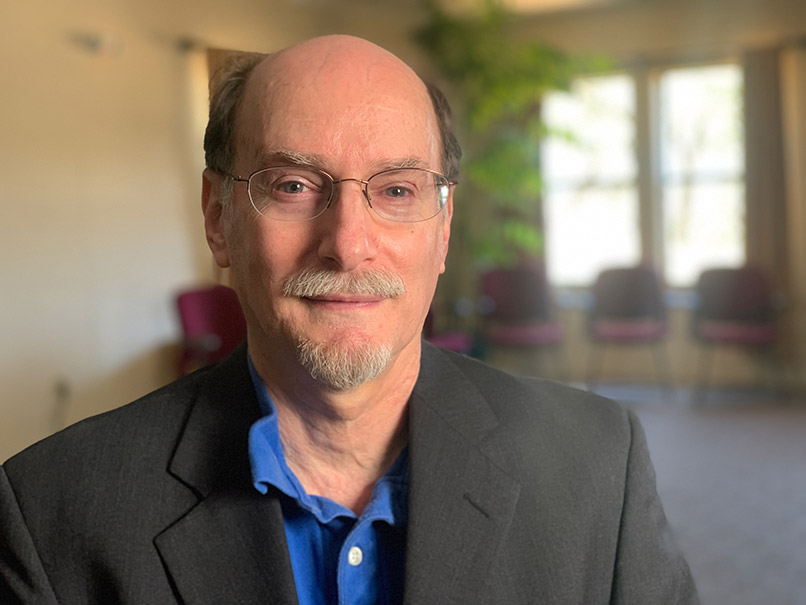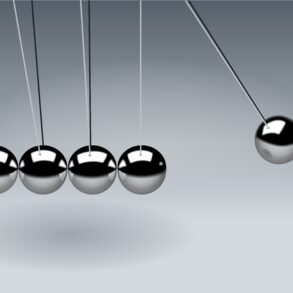Short bio: Dean Radin is Chief Scientist at the Institute of Noetic Sciences (IONS), Associated Distinguished Professor at the California Institute of Integral Studies, and cofounder and chairman of the biotech company, Cognigenics. He earned an MS (electrical engineering) and a PhD (psychology) from the University of Illinois, Urbana-Champaign, and in 2022 was awarded an Honorary DSc (doctor of science) from the Swami Vivekananda University in Bangalore, India.
Before joining the IONS research staff in 2001, Radin worked at AT&T Bell Labs, Princeton University, the University of Edinburgh, and SRI International. He has given over 750 talks and interviews worldwide, and he is the author or coauthor of some 300 scientific and popular articles, four dozen book chapters, and nine books, four of which have been translated into 15 foreign languages: The Conscious Universe (1997), Entangled Minds (2006), Supernormal (2013), and Real Magic (2018).
Video Introduction
The consciousness-collapse interpretation (CCI) of quantum mechanics proposes that the quantum wavefunction “collapses” when it interacts with consciousness. While this idea is not considered a central tenet of physics today, most of the founders of quantum mechanics supported the idea, and according to surveys it is still endorsed by about 20% of contemporary physicists. As of 2023, five independent laboratories have conducted some 30 experiments exploring this hypothesis using double-slit optical systems. I am aware of a sixth laboratory as well, but those results are not published yet. Of the published studies, nearly half report statistically significant changes in the interference pattern when people are asked to observe the apparatus with their “mind’s eye” from a distance. This is a relatively new experimental paradigm with implications much more radical than quantum entanglement, thus many more independent replications will be required. However, the results observed so far are consistent with a half-century of previously reported mind-matter interaction studies using quantum-indeterminate random sources.
The following are a list of the articles and research papers that were referenced by Dean Radin in the video.
Anomalous Cognition: An Umbrella Review of the Meta-Analytic Evidence
Abstract: Objective: The aim of this study was to assess the results of all meta-analyses on anomalous cognition conducted between 1989 and 2021 in order to find moderators associated with greater effect sizes. Method: We included all meta-analyses of studies related to anomalous cognition published up to 2021. Results: Our dataset, accumulated over more than 80 years of investigation, refers to 11 meta-analyses related to six different states of consciousness. The evidence clearly shows that anomalous cognition seems possible and its effects can be enhanced by using a combination of some non-ordinary or altered states of consciousness (e.g., dreaming, ganzfeld, etc.), coupled with free-response procedures, or neurophysiological dependent variables. These conditions facilitate an alternative form of cognition seemingly unconstrained by the known biological characteristics of the sense organs and the brain. Conclusion: The accumulated evidence expands our understanding of the mind-brain relation and the nature of the human mind.
Remote Viewing: A 1974-2022 Systematic Review and Meta-Analysis
ABSTRACT
This is the first meta-analysis of all studies related to remote-viewing tasks conducted up to December 2022. After applying our inclusion criteria, we selected 36 studies
with a total of 40 effect sizes. Both frequentist and Bayesian meta-analyses revealed a
strong average effect size of .34; 95% confidence interval: .22 -.45, after the exclusion
of outliers, without signs of publication bias and a minimal decline effect. In terms of
raw scores, these average results correspond to a difference in hits score of 19.3%; 95%
confidence intervals:13.6%–25%, above the expected chance. Among the meta-analyses of moderators, a small nonstatistical difference emerged between the precognitive and clairvoyance tasks, particularly for those with an outbound agent. A comparison among meta-analysis results observed with other experimental protocols testing extrasensory perception showed the clear superiority of remote viewing. After more than 50 years of investigation into extrasensory perception, remote-viewing experimental protocols appear to be the most efficient for both experimental and practical applications.
Stage 2 Registered Report: Anomalous perception in a Ganzfeld condition – A meta-analysis of more than 40 years of investigation [version 2; peer review: awaiting peer review]
Abstract
This meta-analysis is an investigation into anomalous perception (i.e., conscious identification of information without any conventional sensorial means). The technique used for eliciting an effect is the Ganzfeld condition (a form of sensory homogenization that eliminates distracting peripheral noise). The database consists of studies published between January 1974 and December 2020 inclusive.
The overall effect size estimated both with a frequentist and a Bayesian random-effect model, were in close agreement yielding an effect size of .099 (.05-.14). This result passed four publication bias tests and seems not contaminated by questionable research practices.
Trend analysis carried out with a cumulative meta-analysis and a meta-regression model with Year of publication as a covariate did not indicate a sign of the decline of this effect size. The moderators’ analyses show that selected participants’ outcomes were almost three times those obtained by non-selected participants and that tasks that simulate telepathic communication show a two-fold effect size with respect to tasks requiring the participants to guess a target. The Stage 1 Registered Report can be accessed here: https://doi.org/10.12688/f1000research.24868.3
Consciousness and the Collapse of the
Wave Function
Introduction
One of the hardest philosophical problems arising from contemporary science is the problem of quantum reality. What is going on in the physical reality underlying the predictions of quantum mechanics? It is widely accepted that quantum-mechanical systems are describable by a wave function. The wave function need not specify definite properties for a system: instead, it may specify that the system is in a superposition of multiple values for position, momentum, and other properties.
When one measures these properties, however, one always obtains a definite result. On a common picture, the wave function is guided by two separate principles. First, there is a process of evolution according to the Schr¨odinger equation, which is linear, deterministic, and constantly ongoing. Second, there is a process of collapse into a definite state, which is nonlinear, non-deterministic, and happens only on certain occasions of measurement.
This picture is standardly accepted at least as a basis for empirical predictions, but it has been less popular as a story about the underlying physical reality. The biggest problem is the measurement problem (see Albert (1992); Bell (1990)). On this picture,
a fundamental measurement-collapse principle says that collapses happen when and only when a measurement occurs. But on the face of it, the notion of “measurement” is vague and anthropocentric, and is inappropriate to play a role in a fundamental specification of reality. To make sense of quantum reality, one needs a much clearer specification of the underlying dynamic processes.
Arguing for an Observational Theory of
Paranormal Phenomena
Abstract—The problem of devising a theory for paranormal phenomena (psi) may be separated into, first, the basic physical mechanism and second, the psychological aspects of how and when people are able to elicit psi. Observational theory addresses primarily the first aspect, the basic physical mechanism of psi. A problem is that the known types of physical interaction do not fit the existing data. The measurement problem in quantum mechanics can be used to hypothesize an observer who adds information at the collapse of the wave function. For each random event, one of the possible outcomes becomes realized as the event is being observed. The basic tenet of observational theory is: the statistics of single events become biased if the observer is motivated and prefers one of the possible outcomes over the other.
Features of the observational theory are its predictive power, proven with regard to retroactive psychokinesis (PK); parsimony: the same mechanism explains ESP as well as PK; fruitfulness, as there is a direct relationship with quantum mechanics; and openness to crucial experiments. The falsifiability criterion poses some problems: these are discussed in relation to Lakatos’ methodology of research programs. Observational theory is a solution to the problem of the mediation of psi, thus providing a framework for the psychological problem of the manifestation of psi. Henceforth, the observation of the outcome should be regarded as a formal part of parapsychological experiments. There is reason for cautious, patient optimism about the acceptance of observational theory.
Article: Quantum Physics Isn’t as Weird as You Think. It’s Weirder









